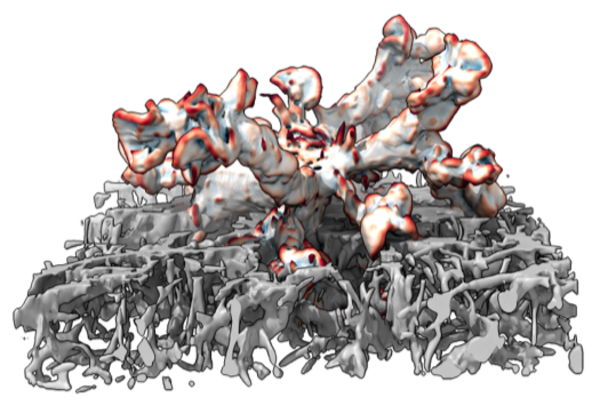Nuclear positioning facilitates amoeboid migration along the path of least resistance
03.04.2019
Jörg Renkawitz, associated with SFB914, and colleagues publish their results in Nature.
Nuclear positioning facilitates amoeboid migration along the path of least resistance
Leukocytes constantly migrate through the body, facing three-dimensional mazes crowded with extracellular matrix and other cells. Jörg Renkawitz and colleagues at the Institute of Science and Technology, Austria and University of Texas, Southwestern Medical Center, US, discovered that leukocytes use their nucleus as a ruler to probe their surroundings for the largest pores—and thereby find the path of least resistance.
Leukocytes are very fast moving cells. For instance, all leukocytes in the human body cover a cumulative distance of more than 100,000 km per hour. On their journey, these migratory cells have to find their way through crowded three-dimensional mazes, without digesting or remodelling their environment. Professor Michael Sixt and his team—including first author Jörg Renkawitz, a Postdoc at IST Austria, who is now leading his own research group at the Biomedical Center of Ludwig-Maximilians-University in Munich, Germany—discovered how leukocytes manage to choose the path of least resistance when navigating through complex environments.
Nucleus measures pore size during leukocyte navigation. To understand leukocyte navigation through complex environments, the researchers built an obstacle course for leukocytes in reconstituted tissue where the cells could choose between differently sized pores while following global directional cues such as chemotactic gradients. Whenever the cells had a choice, they used the bigger pores, i.e. the path of least resistance. In further tests, the authors found that the cells facilitate this active directional movement by pushing their nucleus very much to the front of the cell so it can serve as a kind of mechanical gauge or ruler. In other words, as the cell is moving forward, it applies cytoskeletal forces to insert its nucleus into several adjacent pores to measure pore sizes.
Microtubules make sure that cell is not fragmented when passing through pores. Whenever the cells successfully push their nucleus through a pore, the cell has to retract the protrusions, which are still inserted in the other pores to avoid becoming entangled or even fragmented. To communicate the protrusions (that do not contain the nucleus) to retract, the microtubules disappear from these protrusions as soon as the microtubule organising center (which always follows the nucleus) passes through a pore. This disappearance of the microtubules triggers actomyosin contraction and the cell finally retracts the remaining protrusions. When the authors actively destroyed the microtubules, the cells entangled because the supernumerary protrusions had not retracted and kept moving forward through other pores and migrated in many directions. Ultimately, the cell fractured into pieces and died.
Whereas these findings are based on the analysis of leukocytes, the mechanisms might likely be similar for any other amoeboid cell types involved in developmental, immunity, cancer or regeneration processes.
Publication:
Renkawitz J, Kopf A, Stopp J, de Vries I, Driscoll MK, Merrin J, Hauschild R, Welf ES, Danuser G, Fiolka R, Sixt S.
Nuclear positioning facilitates amoeboid migration along the path of least resistance.
Nature, April 03, 2019 [Epub ahead of print].
Contact:
Prof. Dr. Jörg Renkawitz
Biomedical Center Munich (BMC)
Ludwig-Maximilians-Universität München
Großhaderner Str. 9
82152 Planegg-Martinsried
Joerg.Renkawitz@med.uni-muenchen.de
Homepage: www.renkawitz-lab.com


